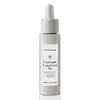What's inside
What's inside
 Key Ingredients
Key Ingredients

 Benefits
Benefits

 Concerns
Concerns

 Ingredients Side-by-side
Ingredients Side-by-side

Ethylhexyl Methoxycinnamate 3%
UV AbsorberWater
Skin ConditioningCyclopentasiloxane
EmollientPEG-10 Dimethicone
Skin ConditioningIsododecane
EmollientButylene Glycol
HumectantAcrylates/Polytrimethylsiloxymethacrylate Copolymer
Skin ConditioningPropanediol
SolventCyclohexasiloxane
EmollientCetyl PEG/PPG-10/1 Dimethicone
EmulsifyingIsodecyl Neopentanoate
EmollientPolymethylsilsesquioxane
Helianthus Annuus Seed Oil
EmollientDisteardimonium Hectorite
StabilisingMagnesium Sulfate
Schinziophyton Rautanenii Kernel Oil
EmollientPhenoxyethanol
PreservativeDisodium Stearoyl Glutamate
CleansingCaprylyl Glycol
EmollientEthylene Brassylate
MaskingDimethicone/Bis-Isobutyl PPG-20 Crosspolymer
EmollientSilica
AbrasiveSorbitan Sesquioleate
EmulsifyingEvodia Rutaecarpa Fruit Extract
Skin ConditioningEthylhexylglycerin
Skin ConditioningHexylene Glycol
EmulsifyingCellulose Gum
Emulsion StabilisingTetrahexyldecyl Ascorbate
AntioxidantTocopheryl Acetate
AntioxidantAluminum Hydroxide
EmollientRetinyl Palmitate
Skin ConditioningRhodiola Rosea Root Extract
EmollientSodium Hyaluronate
HumectantBHT
AntioxidantRosmarinus Officinalis Leaf Extract
AntimicrobialTocopherol
AntioxidantIron Oxides
CI 77491
Cosmetic ColorantCI 77492
Cosmetic ColorantCI 77499
Cosmetic ColorantCI 77891
Cosmetic ColorantEthylhexyl Methoxycinnamate 3%, Water, Cyclopentasiloxane, PEG-10 Dimethicone, Isododecane, Butylene Glycol, Acrylates/Polytrimethylsiloxymethacrylate Copolymer, Propanediol, Cyclohexasiloxane, Cetyl PEG/PPG-10/1 Dimethicone, Isodecyl Neopentanoate, Polymethylsilsesquioxane, Helianthus Annuus Seed Oil, Disteardimonium Hectorite, Magnesium Sulfate, Schinziophyton Rautanenii Kernel Oil, Phenoxyethanol, Disodium Stearoyl Glutamate, Caprylyl Glycol, Ethylene Brassylate, Dimethicone/Bis-Isobutyl PPG-20 Crosspolymer, Silica, Sorbitan Sesquioleate, Evodia Rutaecarpa Fruit Extract, Ethylhexylglycerin, Hexylene Glycol, Cellulose Gum, Tetrahexyldecyl Ascorbate, Tocopheryl Acetate, Aluminum Hydroxide, Retinyl Palmitate, Rhodiola Rosea Root Extract, Sodium Hyaluronate, BHT, Rosmarinus Officinalis Leaf Extract, Tocopherol, Iron Oxides, CI 77491, CI 77492, CI 77499, CI 77891
Water
Skin ConditioningIsopentyldiol
HumectantTranexamic Acid
AstringentPropanediol
SolventCitric Acid
BufferingKojic Acid
AntioxidantNiacinamide
SmoothingHydroxyacetophenone
AntioxidantIsododecane
EmollientPolyacrylate Crosspolymer-6
Emulsion StabilisingGlycyrrhiza Glabra Root Extract
BleachingPanthenol
Skin ConditioningGlycerin
HumectantXanthan Gum
EmulsifyingTremella Fuciformis Sporocarp Extract
AntioxidantPhenoxyethanol
PreservativeEthylhexylglycerin
Skin ConditioningBetaine
HumectantSodium Hyaluronate
HumectantSodium Phytate
Potassium Sorbate
PreservativeTocopherol
AntioxidantWater, Isopentyldiol, Tranexamic Acid, Propanediol, Citric Acid, Kojic Acid, Niacinamide, Hydroxyacetophenone, Isododecane, Polyacrylate Crosspolymer-6, Glycyrrhiza Glabra Root Extract, Panthenol, Glycerin, Xanthan Gum, Tremella Fuciformis Sporocarp Extract, Phenoxyethanol, Ethylhexylglycerin, Betaine, Sodium Hyaluronate, Sodium Phytate, Potassium Sorbate, Tocopherol
 Reviews
Reviews

Ingredients Explained
These ingredients are found in both products.
Ingredients higher up in an ingredient list are typically present in a larger amount.
Ethylhexylglycerin (we can't pronounce this either) is commonly used as a preservative and skin softener. It is derived from glyceryl.
You might see Ethylhexylglycerin often paired with other preservatives such as phenoxyethanol. Ethylhexylglycerin has been found to increase the effectiveness of these other preservatives.
Isododecane is a fragrance, emollient, and solvent.
As an emollient, it helps your skin stay soft and hydrated. Emollients help trap moisture into your skin.
Isododecane's role as a solvent makes it a great texture enhancer. It spreads smoothly on skin and does not leave a sticky feeling behind. Isododecane also helps prevent color transfer in makeup products.
Isododecane is not absorbed into skin.
Learn more about IsododecanePhenoxyethanol is a preservative that has germicide, antimicrobial, and aromatic properties. Studies show that phenoxyethanol can prevent microbial growth. By itself, it has a scent that is similar to that of a rose.
It's often used in formulations along with Caprylyl Glycol to preserve the shelf life of products.
Propanediol is an all-star ingredient. It softens, hydrates, and smooths the skin.
It’s often used to:
Propanediol is not likely to cause sensitivity and considered safe to use. It is derived from corn or petroleum with a clear color and no scent.
Learn more about PropanediolSodium Hyaluronate is hyaluronic acid's salt form. It is commonly derived from the sodium salt of hyaluronic acid.
Like hyaluronic acid, it is great at holding water and acts as a humectant. This makes it a great skin hydrating ingredient.
Sodium Hyaluronate is naturally occurring in our bodies and is mostly found in eye fluid and joints.
These are some other common types of Hyaluronic Acid:
Learn more about Sodium HyaluronateTocopherol (also known as Vitamin E) is a common antioxidant used to help protect the skin from free-radicals and strengthen the skin barrier. It's also fat soluble - this means our skin is great at absorbing it.
Vitamin E also helps keep your natural skin lipids healthy. Your lipid skin barrier naturally consists of lipids, ceramides, and fatty acids. Vitamin E offers extra protection for your skin’s lipid barrier, keeping your skin healthy and nourished.
Another benefit is a bit of UV protection. Vitamin E helps reduce the damage caused by UVB rays. (It should not replace your sunscreen). Combining it with Vitamin C can decrease sunburned cells and hyperpigmentation after UV exposure.
You might have noticed Vitamin E + C often paired together. This is because it is great at stabilizing Vitamin C. Using the two together helps increase the effectiveness of both ingredients.
There are often claims that Vitamin E can reduce/prevent scarring, but these claims haven't been confirmed by scientific research.
Learn more about TocopherolWater. It's the most common cosmetic ingredient of all. You'll usually see it at the top of ingredient lists, meaning that it makes up the largest part of the product.
So why is it so popular? Water most often acts as a solvent - this means that it helps dissolve other ingredients into the formulation.
You'll also recognize water as that liquid we all need to stay alive. If you see this, drink a glass of water. Stay hydrated!
Learn more about Water